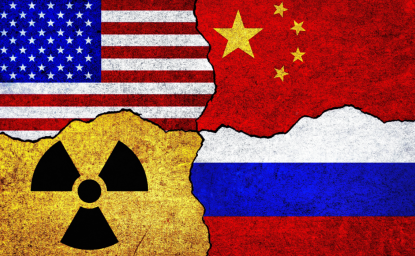WASHINGTON - To President George W. Bush, North Korea and Iran were “rogue states,” suggesting that their regimes were irredeemable. President Obama changed that to “outliers,” a label that implied the path was open for Pyongyang and Tehran to rejoin the community of nations if they complied with the Nuclear Nonproliferation Treaty. Their choice was integration or isolation.
Therein lies the dilemma. The regimes in North Korea and Iran perceive integration into an international community whose dominant power is the United States as a threat to their survival. Integration might yield short-term regime-sustaining economic benefits, but it carries the risk of regime-terminating political contagion.
The nuclear issue is thus a proxy for the fundamental debate by these regimes over what type of relationship they are prepared to have with the United States and the rest of the world.
In dealing with the nuclear defiance in Iran and North Korea, the Bush administration was caught between the precedents set in Iraq, where it had gone to war to change the regime, and Libya, where it had signaled Muammar el-Qaddafi that if he gave up his unconventional arsenal, Washington would eschew the objective of regime change. With Iran and North Korea, Washington could not resort to direct military intervention, and it was unwilling to offer the assurance that sealed the Libya deal.
By contrast, in his inaugural address, Mr. Obama offered North Korea and Iran to “extend a hand if you are willing to unclench your fist.” His administration jettisoned regime change rhetoric and gave North Korea and Iran a choice: abide by international norms and gain the economic benefits of greater integration with the international community, or face isolation and punitive consequences.
The outliers rebuffed the extended hand. Pyongyang and Tehran seized on NATO’s 2011 intervention in Libya as evidence that Qaddafi had been duped by the West. Essentially, by taking down regimes in Iraq and Libya, Washington priced itself out of the security assurance market in Pyongyang and Tehran.
Both North Korea and Iran are undergoing potentially significant societal developments. The problem for the United States is that the nuclear crises are immediate, whereas the prospects for political evolution in the two countries are uncertain.
All the options for dealing with the outliers may remain on the table, but none are good. Military action? In North Korea, there is no longer a target; Pyongyang separated and removed the plutonium from its Yongbyon reactor site and now has a small nuclear arsenal. Attacking Iran would at best set back, but not end the nuclear program.
Moreover, the case for a military strike on Iran’s nuclear program rests on an assessment that the theocratic regime is undeterrable and apocalyptic. But that presumption runs contrary to National Intelligence Estimates, which have characterized the clerical regime’s decision-making as being “guided by a cost-benefit approach.” And U.S. intelligence analysts maintain that Iran has not yet decided to cross the threshold from a potential capability to an actual weapon.
In any case, the reality is that the window for full rollback of Iran’s and North Korea’s nuclear capabilities has closed. So the pragmatic path for Washington is to remain open to diplomacy, backed by the coercive pressure of sanctions, to establish limits on their nuclear programs. That would primarily entail curbing their acquisition of additional fissile material.
In effect, that would amount to containment in the classic meaning of that term as devised by George Kennan for dealing with the Soviet Union after World War II. In effect, that is what Mr. Obama is already doing, and will continue doing so long as Iran defers weaponization and North Korea is kept in check.
The trouble is that “containment” as a strategy is increasingly denounced by hard-liners in the U.S. policy debate as tantamount to appeasement, reducing the administration’s political space.
“I do not have a policy of containment; I have a policy to prevent Iran from obtaining a nuclear weapon,” Mr. Obama declared in a speech to Aipac, the pro-Israel lobby, in March. Mr. Obama has also argued that the Tehran regime, under the pressure of crushing sanctions, can make a “strategic calculation” to defer a decision to weaponize.
This is, in effect, containment, and it is the only real option the president has. But his rejection of the term underscores the difficult political waters he is treading. Critics of the administration argue that allowing Iran to retain even a latent capability to acquire nuclear weapons constitutes an unacceptable threat.
Yet containment, in the classic sense, is the only real option the president has.
So long as Iran and North Korea see integration into the international community as a threat to their survival, and so long as they lack any long-term alternative for their economies, they will continue to use their nuclear programs and the ambiguities they generate as a proxy for relations with the world.
Washington, for its part, does not have the option of changing their regimes or compelling their integration by force. And there is no telling how long their regimes will last.
But they will not last forever. So the only real option open to Washington is to maintain stern sanctions and wait for internal forces in the outliers to do their work. In other words, an updated, retooled version of Kennan’s old strategy. It is not a great choice, but it is the best of a bad set of options.
This article orignially appeared in the International Herald Tribune.






